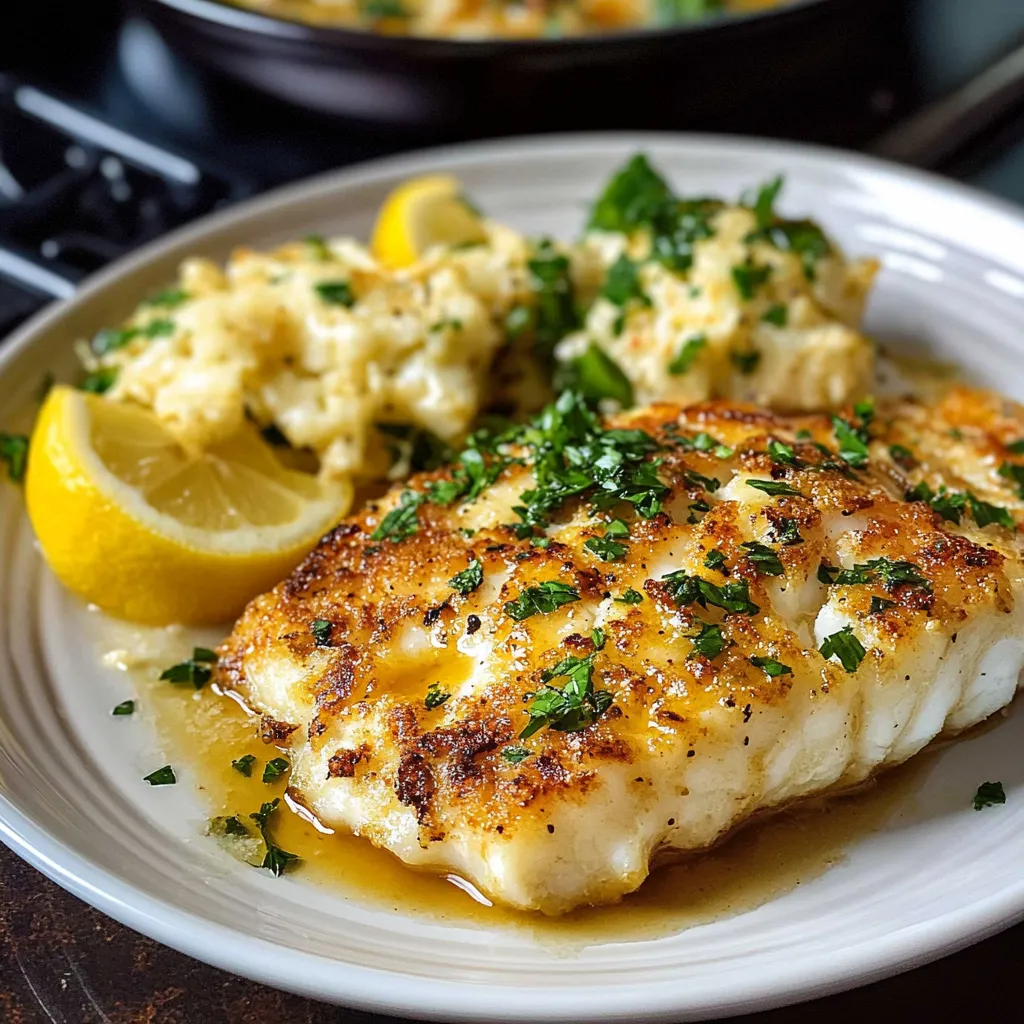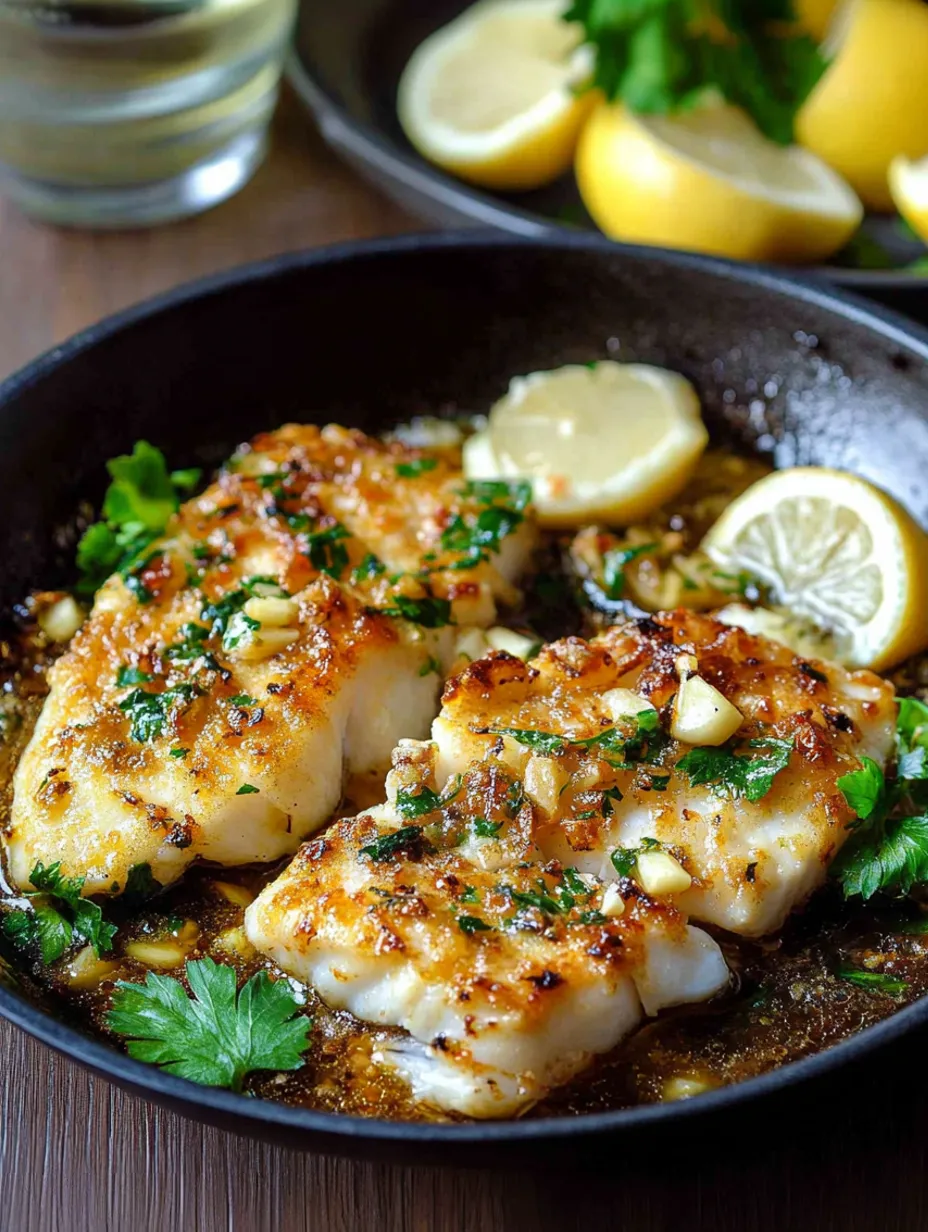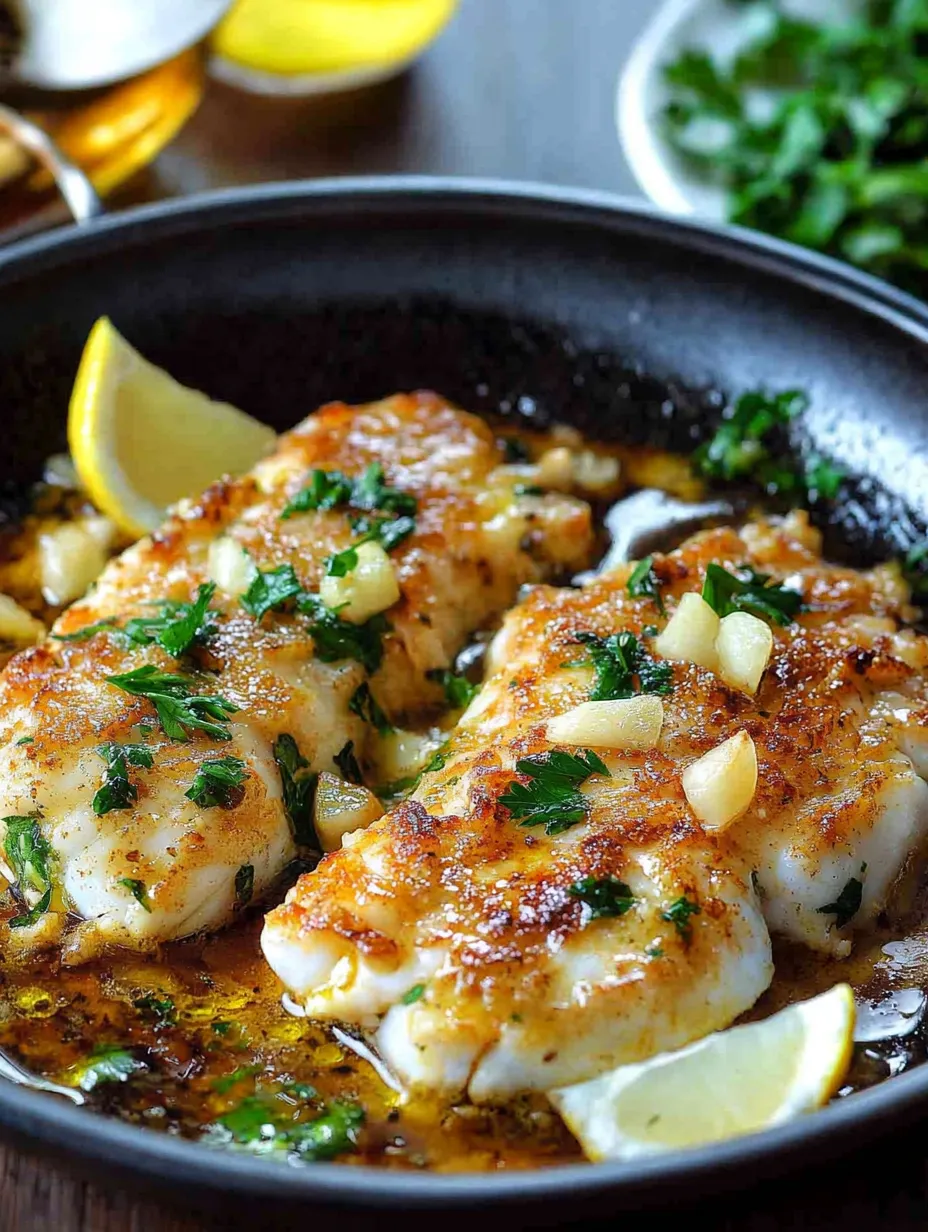 Pin it
Pin it
You know what's weird? I used to hate cooking fish at home. It always smelled up the kitchen, turned out dry, or just tasted...fishy. Then I stumbled on this cod recipe that changed everything. My kitchen still smells when I make it, but now it's this amazing garlic-lemon cloud that makes my neighbors "coincidentally" drop by around dinnertime. This isn't some fancy-pants dish that requires culinary school skills, either. It's my go-to "crap, it's already 5:30" dinner that somehow manages to taste like I spent all day on it instead of 20 minutes.
My husband's mom showed me this recipe after I served her what I thought was perfectly acceptable baked fish (it wasn't). Instead of just criticizing, she actually rolled up her sleeves the next night and showed me how it's done. She picked up the technique during some ouzo-soaked cooking class in Santorini. I've been making it religiously ever since, and even my kids—who normally treat fish like it's radioactive—clean their plates.
The Good Stuff You'll Need
- Cod - Get the thickest pieces you can find. Skinny ends will overcook while you're waiting for the fat parts to finish. Frozen is totally fine and sometimes better than the "fresh" stuff that's been sitting around.
- Lemons - Don't even think about using that sad plastic squeeze bottle. Real lemons, preferably ones that don't feel like little rocks.
- Olive Oil - Use the good stuff you save for company. You know, the one you bought because the bottle looked fancy, not the giant plastic jug you use for everything else.
- Actual Garlic - Not the pre-chopped stuff swimming in whatever preservative keeps it "fresh" for suspicious amounts of time. Real garlic cloves that require smashing and make your fingers smell for days.
- Spices That Haven't Been in Your Cabinet Since the Obama Administration - Coriander, paprika, and cumin. If they don't smell like anything when you open them, throw them out and buy new ones.
- Regular Flour - Nothing special here, just the all-purpose stuff you use for everything.
- Parsley - Fresh only. The dried stuff looks like something you'd clean out of your lawnmower.
 Pin it
Pin it
Let's Get Cooking
Set Up ShopGrab two shallow bowls. In the first one, mix your lemon juice, olive oil, and melted butter together until it looks kind of cloudy. In the second, dump your flour and add all the spices and salt. Stir it up. Congrats, you've created your dredging stations, which makes you sound like you know what you're doing.
Dry Those FilletsPat your cod dry with paper towels like you're blotting lipstick. Fish is wet enough already; extra moisture is the enemy of good browning. Dunk each piece first in your lemon-oil mixture, let the excess drip off, then roll it in your spice-flour blend. I use my left hand for the wet stuff and right hand for the dry to avoid creating that cement-like paste on my fingers.
Get That Golden CrustHeat up a skillet that can go in the oven. Make it pretty hot—when a drop of water skitters across the surface like it's on a hot sidewalk, you're ready. Add enough oil to coat the bottom, then carefully lay in your fish. Don't crowd them; they need personal space like subway passengers. Let them sit untouched for 2 minutes, then flip once. If you're flipping more than once, you're just playing with your food.
Garlic EverythingRemember that lemony oil mixture you reserved? Dump a bunch of minced garlic in there. Pour this garlicky goodness all over your fish. The kitchen will smell so good at this point that you might have to fight off family members with a spatula.
Finish In The OvenStick the whole pan in a 400°F oven. Now walk away. Don't keep opening the oven to check—that's just letting heat escape. In about 10 minutes (maybe 12 if your fillets are super thick), you'll have perfect fish. You'll know it's done when it flakes easily with a fork and isn't translucent in the middle anymore.
My personal secret is adding a pinch of red pepper flakes to the flour mix. My MIL doesn't do this, but I think it adds this subtle warmth that makes the lemon taste even brighter. I've never told her I modified her recipe. Some family secrets are best kept.
How To Serve This Bad Boy
Turn dinner into a whole Mediterranean situation by pairing it with a big Greek salad—you know, chunks of cucumber, tomato, feta, olives, the works. The cold, crunchy salad against the warm, tender fish is chef's kiss.
Make it dinner-party fancy by serving the cod on top of lemon rice or orzo pasta. The starchy base soaks up all that ridiculous sauce, and people will actually moan a little when they take a bite. Throw some roasted asparagus or broccoli on the side and act like it was no big deal to put this together.
For a "who needs restaurants?" meal, put the fish on a bed of super creamy mashed potatoes with some roasted cherry tomatoes scattered around. The colors look gorgeous together, and the combination of flavors will make you feel like you should be charging people to eat at your table.
Shake Things Up
Herb It UpSometimes I go crazy and add fresh herbs to both the flour and the sauce. Dill and cod are a match made in fish heaven. Thyme and rosemary bring this piney, woodsy thing that works surprisingly well with the lemon.
Make It CreamyWhen I'm feeling particularly devil-may-care about my arteries, I add a splash of heavy cream or a dollop of Greek yogurt to the sauce before pouring it over the fish. It makes this velvety, luxurious situation that's ridiculous in the best way possible.
One-Pan WonderThrow a handful of kalamata olives, some capers, and halved cherry tomatoes around the fish before it goes in the oven. They'll release their juices into the sauce and basically create a built-in side dish with zero extra effort.
Dealing With Leftovers
Real TalkThis dish is at its absolute peak when it's fresh out of the oven. The contrast between the slightly crisp exterior and the tender, juicy inside just doesn't hold up over time. That said, we don't always clean our plates.
If you do have leftovers, let the fish cool down a bit before putting it in the fridge in a shallow container. Try to eat it within a day. When you reheat it, do it gently—low oven with foil over the top—or you'll end up with fish jerky. The microwave is a hard no unless you enjoy the texture of rubber.
The sauce tends to get soaked up overnight, so I usually mix a little fresh lemon juice and olive oil to drizzle over the top before reheating. Brings back some of that zing.
Technically you can freeze cooked fish, but let's be honest—it's never the same afterward. If you absolutely must freeze it, use the thawed fish for something like fish cakes or a chowder where the changed texture won't be so obvious.
 Pin it
Pin it
Pro Moves
Wine PairingThis fish begs for a crisp white wine. Throw a Pinot Grigio or Sauvignon Blanc in the fridge while you cook, and pretend you're dining on the Mediterranean even if you're actually in a suburb in Ohio.
Doneness TestStick a knife in the thickest part of the fish. If it slides through like it's going through warm butter and the flesh flakes, you're golden.
Garlic HackInstead of mincing all the garlic, try crushing half the cloves and leaving them larger. They'll get all sweet and soft during baking, and biting into one is like finding a little flavor treasure.
I've made this recipe approximately one billion times since learning it. It's my culinary security blanket—the dish I know will turn out right even when everything else is going wrong. Last year when my sister came to visit (she's one of those annoying people who knows about wine and has opinions on olive oil), I made this for her first night. She asked for it again the next night. And the next. When she was packing to leave, she made me write down the recipe on a napkin because she couldn't wait for me to email it. That's when I knew this wasn't just my go-to dish—it was something that deserved to be shared beyond my dinner table.
Frequently Asked Questions
- → Can I use a different type of white fish?
- Yes, this recipe works well with other mild white fish like haddock, halibut, or sea bass. Just adjust cooking time slightly based on the thickness of your fillets - thinner fillets will cook more quickly.
- → How do I know when the fish is done?
- Fish is done when it flakes easily with a fork and is opaque throughout. For cod, this typically takes about 10 minutes in a 400°F oven after searing. The internal temperature should reach 145°F.
- → Can I make this gluten-free?
- Yes, simply substitute the all-purpose flour with a gluten-free flour blend, rice flour, or even cornstarch. The coating will still become golden and crisp during searing.
- → What can I serve with this baked cod?
- This dish pairs beautifully with Lebanese rice, roasted vegetables, or Mediterranean salads. A simple side of steamed asparagus or broccoli also works well for a lighter meal.
- → Can I prepare this dish in advance?
- While the dish is best served immediately after baking, you can prepare the spice mixture and lemon sauce ahead of time. Fish generally doesn't reheat well, but leftovers can be refrigerated for 2-3 days and gently reheated in a low oven.
